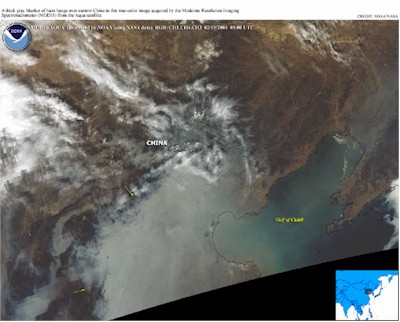|
Eco-Pros |
||||||||||||
|
Look in the distance for the results of Earth's smog test |
||||||||||||
|
|
||||||||||||
|
|
||||||||||||
|
EARTH WOULD NOT PASS THE SMOG TEST!
Smog is a mixture of noxious air pollutants, gases, and fine liquid and solid particles. Urban smog (in densely populated areas/cities) contains harmful levels of ground-level ozone. Ozone in our upper atmosphere (stratospheric ozone) is a useful gas ("good" ozone). This ozone layer keeps much of the harmful UV radiation (ultra violet light) from reaching us at Earth's surface. But, there is "good" ozone and "bad" ozone, depending upon where it is located. Ozone concentrations at ground level (tropospheric ozone) are toxic and this "bad" ozone causes harm to living things. Smog is most visible in very high concentrations. You can see the dense smog in the distance in the picture above of the 10-lane freeway clogged with fossil-fuel burning cars. Millions of vehicles operate 24 hours a day, 7 days a week in large metropolitan areas, like Los Angeles for instance. If you look out the window of an airplane you can see the haze from smog that covers many regions below. It mainly is concentrated in densely populated areas, but wind currents can carry it even hundreds of miles away and over other areas which had nothing to do with its origination. Smog can hover over areas for days if there are no winds to disperse it and help clean the air. Some of our national parks and ecologically important regions on our planet are being damaged from this human-caused pollution. And respiratory ailments among adults and children have steadily increased over the years, with the elderly, sick and young children suffering the greatest harm to their health. How is the ozone produced on Earth's surface? Layers of the Atmosphere Google has found about 536 images of the layers of the atmosphere. If you have trouble finding them on this link, just type in "layers of the atmosphere" in Google's search box (without the quote marks) Ozone Depletion (EPA)
Is the Ozone
Hole really a hole? What is ozone depletion?
Ozone
Hole and Ozone Depletion (Includes resource links at bottom
of page) The Ozone Hole Tour - University of Cambridge, UK AIRNOW
Real-Time Air Pollution Data EPA's UV Index
Calculator Learn all about ultraviolet radiation. The Smog Test Log (EPA/Office of
Transportation and Air Quality - maintained by Colorado School of Mines) Smog City
(Sacramento Metropolitan Air Quality Management District) |
||||||||||||

A thick, gray blanket of smog hangs over Eastern China
Credit: Satellite view from space - National Oceanic and Atmospheric Administration
"Darker
Days in China as Sun Gets Dimmer"
(LiveScience/Fox News, 1/20/06)
